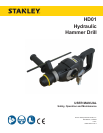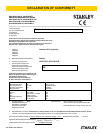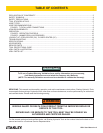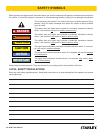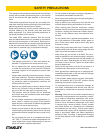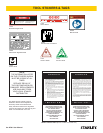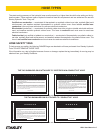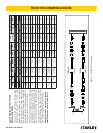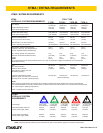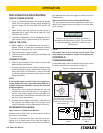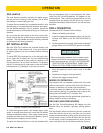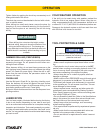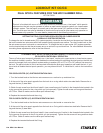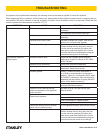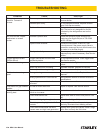
HD01 User Manual ◄ 5
Tool operators and maintenance personnel must always
comply with the safety precautions given in this manual
and on the stickers and tags attached to the tool and
hose.
These safety precautions are given for your safety. Re-
view them carefully before operating the tool and before
performing general maintenance or repairs.
Supervising personnel should develop additional pre-
cautions relating to the specic work area and local
safety regulations. If so, place the added precautions in
the space provided in this manual.
The model HD01 Hydraulic Hammer Drill will provide
safe and dependable service if operated in accordance
with the instructions given in this manual. Read and un-
derstand this manual and any stickers and tags attached
to the tool and hose before operation. Failure to do so
could result in personal injury or equipment damage.
• The operator must start in a work area without by-
standers. Flying debris can cause serious injury.
• Do not operate the tool unless thoroughly trained
or under the supervision of an instructor. Establish
a training program for all operators to ensure safe
operation.
• Always wear personal protective equipment. Always
wear eye protection. Protective equipment such as
dust mask, non-skid safety shoes, hard hat, or hear-
ing protection used for appropriate conditions will
reduce personal injuries.
• Remove any adjusting key or wrench before turning
the tool on. A wrench or key left attached to a rotat-
ing part of the tool may result in personal injury.
• The operator must be familiar with all prohibited
work areas such as excessive slopes and danger-
ous terrain conditions.
• Do not change accessories, make adjustments, in-
spect, clean or replace any part(s) if the hydraulic
power source is connected. Accidental engagement
of the tool can cause serious injury.
• Always connect hoses to the tool hose couplers be-
fore energizing the hydraulic power source. Be sure
all hose connections are tight and are in good condi-
tion.
• Do not operate the tool at oil temperatures above
140 °F/60 °C. Operation at higher temperatures can
cause higher than normal temperatures at the tool
which can result in operator discomfort.
• Do not operate a damaged, improperly adjusted, or
incompletely assembled hammer drill.
• Never wear loose clothing that can get entangled in
the working parts of the tool.
• Keep all parts of your body away from the drill and
maintain proper footing and balance at all times.
• When working near electrical conductors, always
assume that all conductors are energized and that
insulation, clothing and hoses can conduct electric-
ity. Stay a safe distance away from electrical con-
ductors.
• Do not operate tool in explosive atmospheres, such
as in the presence of ammable liquids, gases or
dust. Power tools create sparks which may ignite
the dust or fumes.
• Keep cutting tools sharp and clean. Properly main-
tained cutting tools with sharp cutting edges are less
likely to bind and are easier to control.
• Keep a rm grip on the tool at all times. Do not at-
tempt to operate this tool without holding it with both
hands. It is recommended that the side handle be
used at all times. Operating this tool with one hand
will result in loss of control. Tighten the side handle
securely before use.
• Never lay the tool down until the bit has come to a
complete stop. Moving bits could cause injury.
• Wear gloves when operating tool or changing bits.
Accessible metal parts on the tool and bits may get
extremely hot during operation.
• If the hydraulic power supply has been interrupted,
place the hammer drill in the OFF position before
restarting the hydraulic power supply.
• To avoid personal injury or equipment damage, all
tool repair, maintenance and service must only be
performed by authorized and properly trained per-
sonnel.
• Warning: Use of this tool on certain materials during
demolition could generate dust potentially contain-
ing a variety of hazardous substances such as as-
bestos, silica or lead. Inhalation of dust containing
these or other hazardous substances could result
in serious injury, cancer or death. Protect yourself
and those around you. Research and understand
the materials you are cutting. Follow correct safety
procedures and comply with all applicable national,
state or provisional health and safety regulations
relating to them, including, if appropriate arranging
for the safe disposal of the materials by a qualied
person.
•
SAFETY PRECAUTIONS



